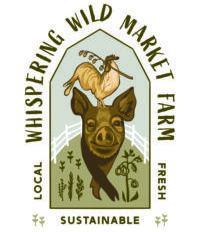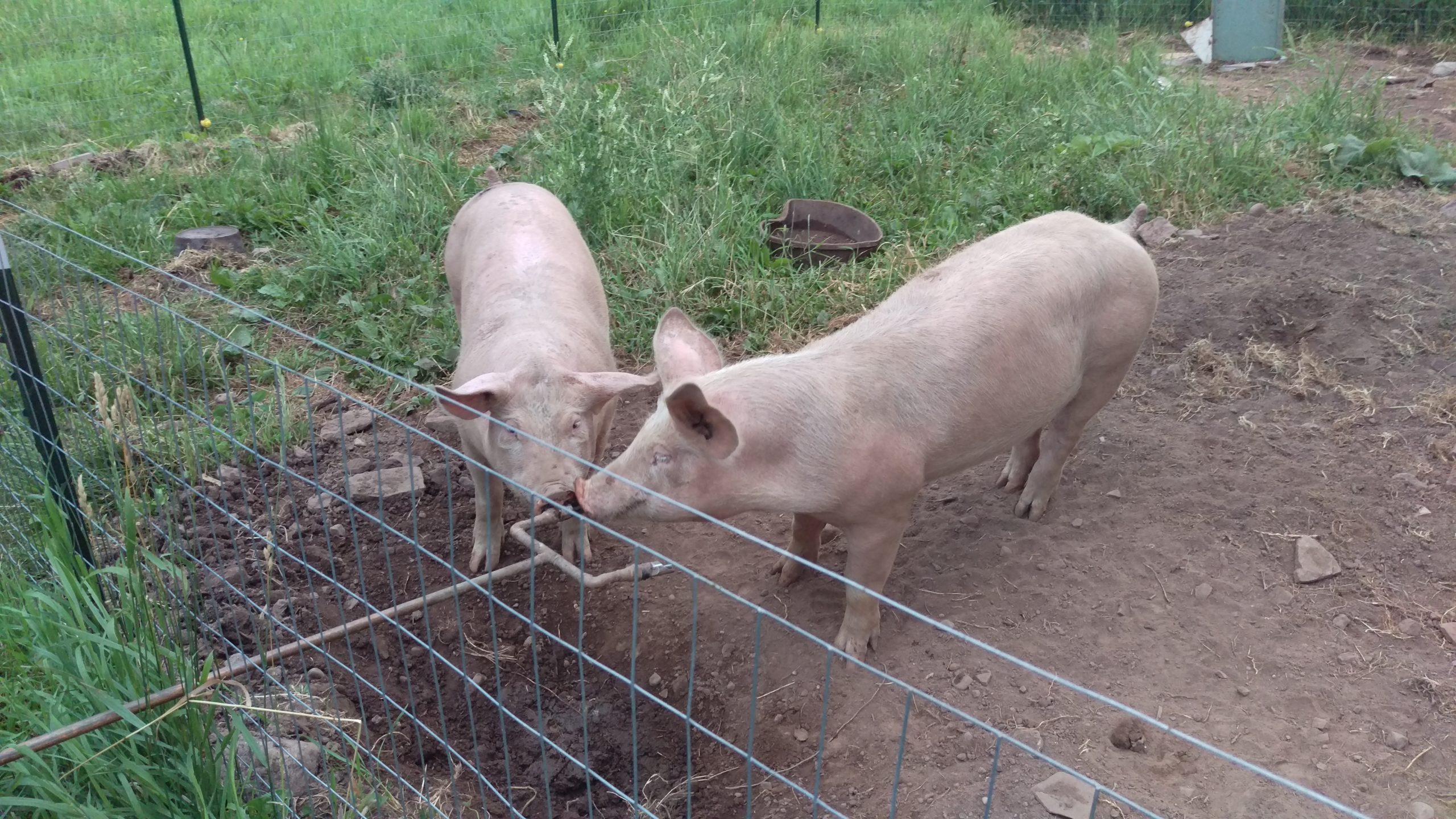2019 was the year of the pig for us. We got a couple feeders in May of 2018 and thought what the heck, let’s try breeding! With a little advice and guidance from a couple other pig farmers in the area, we were able to AI (artificially inseminate) our female (gilt) successfully!!!
Pigs in Spring:
The female pig we kept from our trail run in 2018 produced fourteen live piglets in March, here is a link to the facebook livestream of the birth (warning, it’s unedited and raw
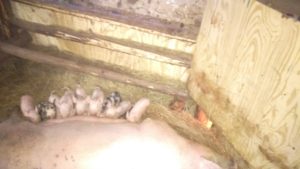
animal birth). They spent the spring in the barn until the snow melted away, and we could get a furrowing pen setup. Out of the fourteen piglets, we kept one gilt for breeding, one pig for Lily’s 4H project and 5 for meat sales. The remainder of the piglets were sold to other local farmers. The last of the piglets to sell was pick up in a downpour and the grow-out pen had turned into a giant mud pit. Thankfully on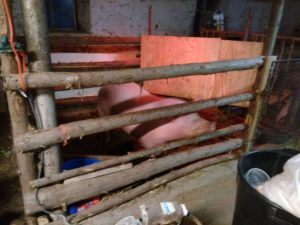 e of the fellows who was purchasing the piglet went all in. It was quite impressive that he managed to catch one. We can confirm that you do indeed get dirty if you wallow with pigs.
e of the fellows who was purchasing the piglet went all in. It was quite impressive that he managed to catch one. We can confirm that you do indeed get dirty if you wallow with pigs.

Pigs in Summer:
It took a good deal of the late spring and early summer’s evenings and weekends, but we managed to get five acres of pasture fenced with five stran ds of twelve and a half gauge hi-tensile electric wire. We fenced in a smaller section inside of the pasture for the pigs using a two-strand seventeen gauge battery-powered electric fence charger. We then put up a thirty-watt solar panel and charge controller. This gave us two layers of fencing so our pigs would not get out. Thankfully that did not happen as they were very happy with the pasture, wallow, and house we provided. They dug up a portion of it, espe
ds of twelve and a half gauge hi-tensile electric wire. We fenced in a smaller section inside of the pasture for the pigs using a two-strand seventeen gauge battery-powered electric fence charger. We then put up a thirty-watt solar panel and charge controller. This gave us two layers of fencing so our pigs would not get out. Thankfully that did not happen as they were very happy with the pasture, wallow, and house we provided. They dug up a portion of it, espe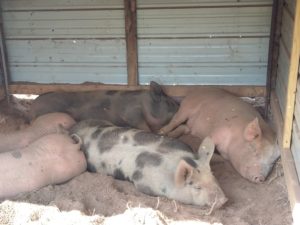 cially right around their shelter. We’re planning on reseeding it in spring for next season’s grow outs.
cially right around their shelter. We’re planning on reseeding it in spring for next season’s grow outs.
Pigs in Fall:
Fall was kicked off with the Houghton County Fair at the end of August where Lily’s 4-H pig, Pot-O-Gold, won first place and Lily won a blue ribbon for showmanship. Getting him *to* the fair was a bit of a rodeo!!! He was reluctant to make his way into the trailer and ended up busting through the makeshift ba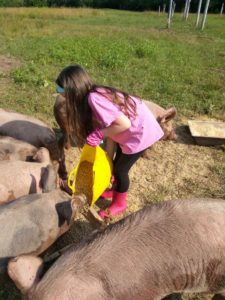 rriers we had up and was wandering around the yard. We called in reinforcements when our neighbor and 4-H leader showed up with her husband and 2 grown sons and proper pig boards. Once he was in the trailer (thank heavens no one was hurt), we made our way to the fairgrounds and it was smooth sailing from there. He weighed in at 269 pounds and though he was in the light-weight division, he was the youngest, but not the lightest pig there. We’re pretty proud of that one and our sweet daughter
rriers we had up and was wandering around the yard. We called in reinforcements when our neighbor and 4-H leader showed up with her husband and 2 grown sons and proper pig boards. Once he was in the trailer (thank heavens no one was hurt), we made our way to the fairgrounds and it was smooth sailing from there. He weighed in at 269 pounds and though he was in the light-weight division, he was the youngest, but not the lightest pig there. We’re pretty proud of that one and our sweet daughter
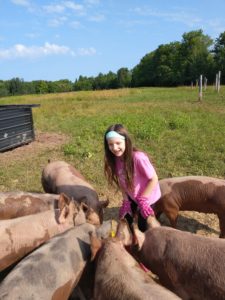 who really showed determina-tion and dedication to learning how to show a pig and raise a pig well. With the fair over, it was time to move our gilt into the barn before taking the remaining five pigs (now 250lb on average) to the butcher that is 3 hours away. We got back some beautiful pork! Dark meat with marbling in all the right places. It tastes amazing! We sold half of it in whole and half shares and a bunch has sold retail. The rest we’ll take our time eating through.
who really showed determina-tion and dedication to learning how to show a pig and raise a pig well. With the fair over, it was time to move our gilt into the barn before taking the remaining five pigs (now 250lb on average) to the butcher that is 3 hours away. We got back some beautiful pork! Dark meat with marbling in all the right places. It tastes amazing! We sold half of it in whole and half shares and a bunch has sold retail. The rest we’ll take our time eating through.
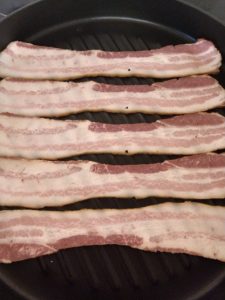
This meat is full of bioavailable vitamin D, iron, plus others and it’s omega 3/omega 6 ratio is 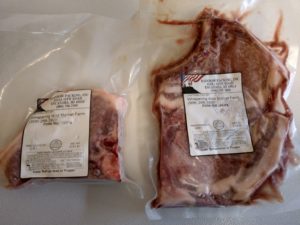
much higher than commercially produced pork.
Our sow’s pen is off the west side of our barn and being 400+ pounds of pure muscle, she had almost completely destroyed my first attempt at a pig house (it’s been a learning experience on how to build something that can survive mature pigs). It was time to move Miss Piggy, as we call her, to a temporary pen while we refurbish her winter home. After building her a temporary shelter in the north barnyard and moving her out, we pulled up the fencing on her west end pen, pulled out the sad remains of what we thought was a great pig house built out of pallets, and spent the next three days rebuilding her pen. Because the area is on a slope we built up a rock retaining wall and brought in many tractor buckets of sand from an excavation on another part of the farm. We raised the northeast corner of the pen up about 6 inches higher and sloped the rest of the pen away from her house. Pigs like to dig out the floor in their pens. When you get as much rain as we do, it can be challenging to not end up with your pig house turning into a covered wallow. Hopefully, the raised sandy floor will help keep her dry. Finally, we built her a nice new house out of steel t-posts driven into the ground, lots of 2×4’s, and some metal roofing that was given to us after a friend of the family replaced their leaking roof. After filling it with a good amount of hay and straw, and putting the fence back up we moved Miss Piggy back to her house. Super happy piggy!!!
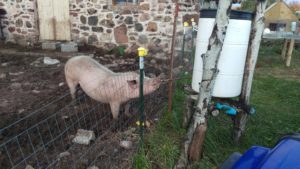
Pigs in Winter:
We had intended that both our sow and our gilt (the sow’s daughter named Princess) would share the pen and the pig house we built this fall. It turns out that Miss Piggy has been quite happy with her three and a half sided house and had no intention to share it. So after she drove our gilt through the electric fence and back into the barn with some scrapes and bruises, it looks like our sow will be spending winter outside and the gilt will be living in the barn this winter. Both pigs were bred this fall so we expect to have piglets in March. The gestation of pigs is easy to remember, three months, three weeks, and three days with very little variance. They are due 2 weeks apart, so we’ll need 2 farrowing pens inside since they stay with the piglets for 5 weeks. This gives us plenty of time to get another farrowing pen built in the barn, right?
